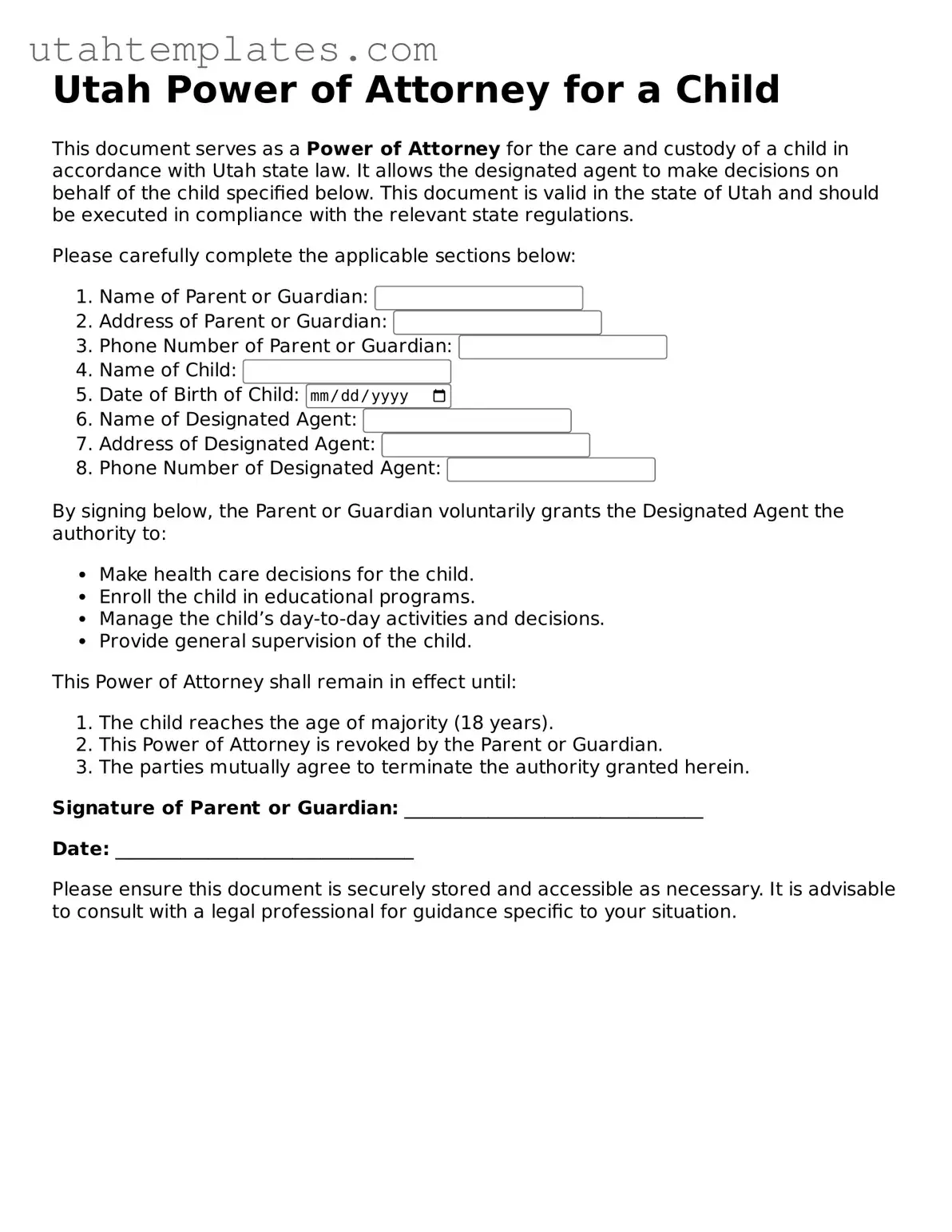When filling out the Utah Power of Attorney for a Child form, many people make common mistakes that can lead to complications down the line. One significant error is failing to include the full names of both the child and the agent. It’s crucial to ensure that all names are spelled correctly and match official documents. This helps avoid confusion and ensures that the document is legally binding.
Another mistake is not specifying the duration of the power of attorney. Without clear start and end dates, the arrangement may be open-ended, which can create uncertainty for both the child and the agent. Clearly stating how long the power of attorney is valid protects everyone involved.
Some individuals overlook the importance of outlining the specific powers granted to the agent. It’s not enough to simply state that the agent has authority over the child. Instead, detail the specific responsibilities the agent will have, such as medical decisions, educational choices, or travel permissions. This clarity can prevent misunderstandings in the future.
Additionally, many people forget to sign and date the form. A signature is essential for the document to be considered valid. Without it, the power of attorney may be challenged or deemed ineffective. Always double-check that all required signatures are present.
Another frequent error involves not having the document notarized. While notarization isn’t always mandatory, having a notary public witness the signatures can add an extra layer of legitimacy. This can be particularly important if the document is ever questioned.
Some parents fail to communicate with the child about the power of attorney. It’s vital for children, especially older ones, to understand what this arrangement means. Open communication fosters trust and helps children feel secure in the situation.
People sometimes neglect to inform other caregivers or family members about the power of attorney. Keeping everyone in the loop ensures that there are no surprises when the agent steps in. This can help avoid potential conflicts or misunderstandings.
Not reviewing the form for accuracy before submission is another common pitfall. Small mistakes can lead to significant issues later. Taking the time to review the document carefully can save a lot of trouble down the road.
Finally, some individuals forget to keep a copy of the completed form. It’s essential to retain a copy for personal records and to provide a copy to the agent. This ensures that everyone involved has access to the necessary information when it’s needed.
